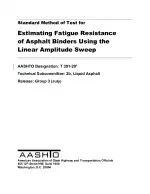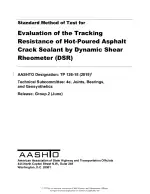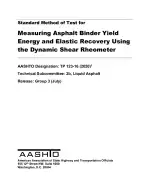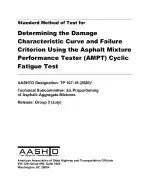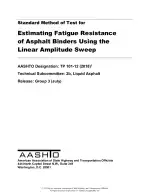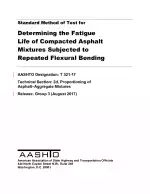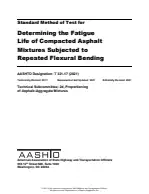AASHTO T 391-20 PDF Download
Standard ENStandard Method of Test for Estimating Fatigue Resistance of Asphalt Binders Using the Linear Amplitude Sweep
Also Known As:
AASHTO T 391-20 is a standard method that outlines the procedure for estimating the fatigue resistance of asphalt binders using the linear amplitude sweep. This test is performed using a Dynamic Shear Rheometer (DSR) at the intermediate pavement temperature determined by the performance grade (PG) of the asphalt binder. The purpose of this test is to evaluate the ability of the asphalt binder to withstand cyclic loading and resist fatigue damage.
The test involves subjecting the asphalt binder to cyclic loading with systematically increasing load amplitudes. The DSR is used to measure the response of the binder to these load amplitudes, specifically its complex modulus and phase angle. By analyzing the change in these parameters at different load amplitudes, the fatigue resistance of the asphalt binder can be determined.
It is important to note that this test method can be used with both unaged binders and binders that have been aged using specific procedures. The aging is done to simulate the effects of aging that occur in asphalt pavements during service. The test results obtained using this method can aid in the selection and design of asphalt mixtures that are more resistant to fatigue damage.
| Language(s) | English |
| File Size | 983.0 KB |

